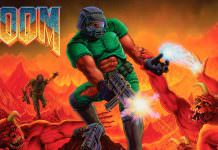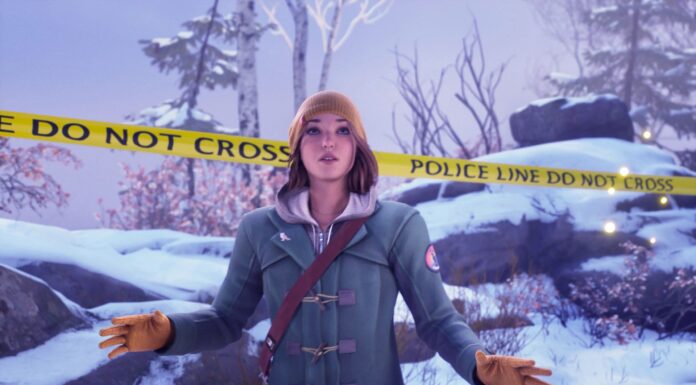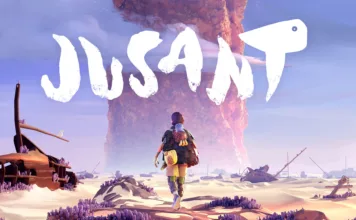Many fans will agree that “Hideo Kojima”, as flawed as he may be as a writer, is a name that will forever mark the progression of video games as an artistic medium. He’s a man who was ahead of his time before anyone knew it and crafted a series that went heavy on story while creating some of the all-time greatest games for the Playstation. I’ll go one further and say that he’s one of the most important names up there with the biggest film directors of our day. I mean that.
Metal Gear Solid V: The Phantom Pain had it’s third big trailer (fourth if you include the sneaky “Phantom Pain” trailer by “Moby Dick Studios” in 2012) revealed at E3 2015, giving more telling details on the plot and cutscenes while a playable demo sat on the showfloor, showcasing fully customisable guns, “Buddies”/support units you can take with you on missions, and other new neat details such as a lovely little customisable photo collection for Big Boss’ chopper.
The light-heartedness of those little quirks and customisable game features are great, and the Metal Gear Solid series has always been known for it’s oddly cartoony, surreal sense of humour against an otherwise straight military thriller background. But that background has, since the invention of the photo-realistic Fox Engine and Ground Zeroes shift into a more grounded tone, become much heavier, much bleaker and much more real-life.
Whereas earlier settings were either placed in a vaguely cyberpunk future or the tropical rainforests of spy-movie “Russia”, were the imagery may have been vaguely evocative of reality, it wasn’t until this final arch of Big Boss’ saga and the closing of the circle that real countries and conflicts were named.
While Metal Gear Solid 4 may have been set in the generic “Middle East” or “South America” or “Eastern Europe” for a chapter, it was only with Peace Walker that Kojima pushed it and very definitively set it in Costa Rica, in the middle of the clandestine CIA activity of the 70s. You’d be forgiven for not noticing due to how whacky Peace Walker was, even by Metal Gear Solid standards.
With Metal Gear Solid V, Kojima outright took us to Guantamo Bay and will be taking us to the Soviet-Afghan War, a central-African child soldier camp and who knows where else – but if the tone of the trailer is anything to go by, it’ll be bleak.
Naturally so as this is the chapter were Naked Snake, the once-charming jungle hunk of Metal Gear Solid 3, completes his transformation into Big Boss; a man who appears to be more and more Lucifer-esque with each piece of promotion, with horns and all.
Try separate yourself from the sheer hype for a moment and appreciate that; Kojima is making a game where we play as a warlord who proliferates the war-economy, tortures scientists, recruits child-soldiers and rubs shoulders with people only equally as villainous as he is, and we’re all dying to play it. It’s no surprise that the trailer is as sombre and ominous as it is.
Each Metal Gear Solid instalment pulls a “you were the bad guy all along” twist by the end, but this one isn’t even pretending. It’s outright telling us that we’re here to play as Satan and giving it a real world weight in the trailer. Nobody is entirely sure what will happen by the end of Phantom Pain’s plot but everybody is certain it’ll be grim. Grimmer than anything previous games have pulled.
Walter White’s character arch in Breaking Bad could never plunge as far as Big Boss’ has to by the end of this game, nor could it point out the darkest aspects of recent American history and get away with it.
And who else could pull something like that off, from within a crumbling AAA studio who just fired him no less, than Hideo Kojima?
I honestly cannot think of another mainstream director that has done something similar. Sure, Game of Thrones may make you sympathise with characters you once hated, butMetal Gear Solid V is in the unique position of putting us in control of Big Boss’ doomed fate. The entire Solid series has a subtle (or, in the case ofMetal Gear Solid 2, confronting) post-modern undercurrent were the player is invited to be an action hero spy beating a bunch of villains, were the act of playing the game is playing into some big delusion or deception that, when revealed, shows that you’re a reprehensible sack of crap. Often times, the series’ promotional material is designed to completely mislead the player and while fans have wizened up to Kojima’s ruse cruise, who knows what twists are left to experience.
I am excited to see how Phantom Pain will approach this theme again as it seems to have it’s own new style of surreal hallucinations on top of an otherwise realistic world. Many fans are theorising that the Snake we’re playing as isn’t the Snake we know, or that the burning celluloid damage indicators and various film-like details to it’s look are hinting that it’s not real. The level of conspiracy-theorist paranoia and anticipation around this game is hilariously justified.
To make something that is both grounded in real life conflicts people don’t like to talk about, and to have those surreal post-modern elements that critique both games and films is just unique to Kojima and there will never be another designer like him, nor will there ever be a series like Metal Gear Solid.
Metal Gear Solid V: The Phantom Pain releases September 1st on PS3, PS4, XBox 360, Xbox One, and on September 15th for PC via Steam. It likely marks the end of Kojima’s career within Konami and thus the last true entry to the Metal Gear Solid series.
















